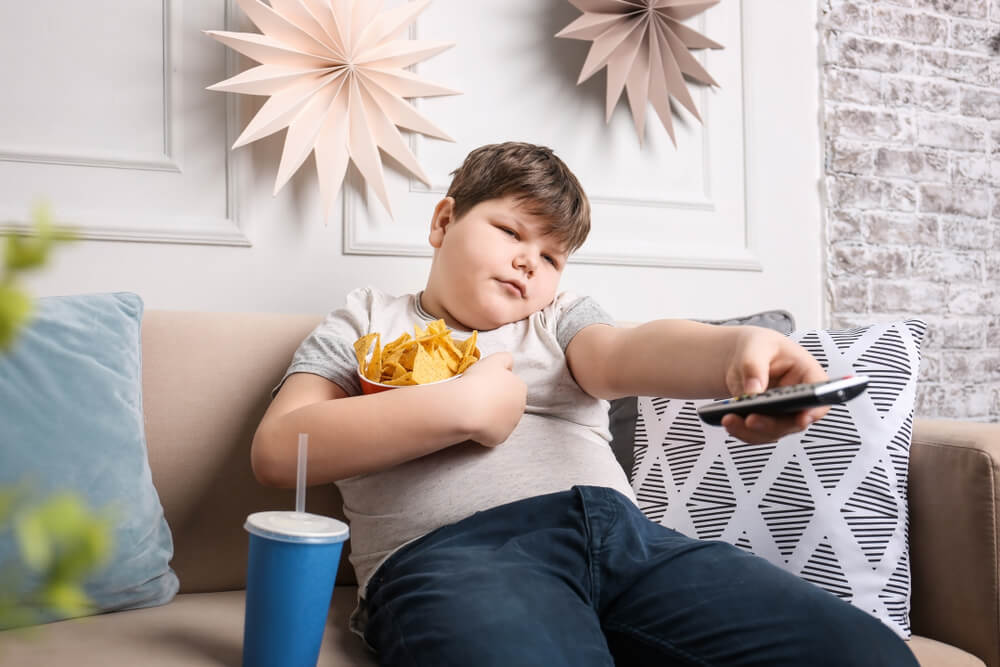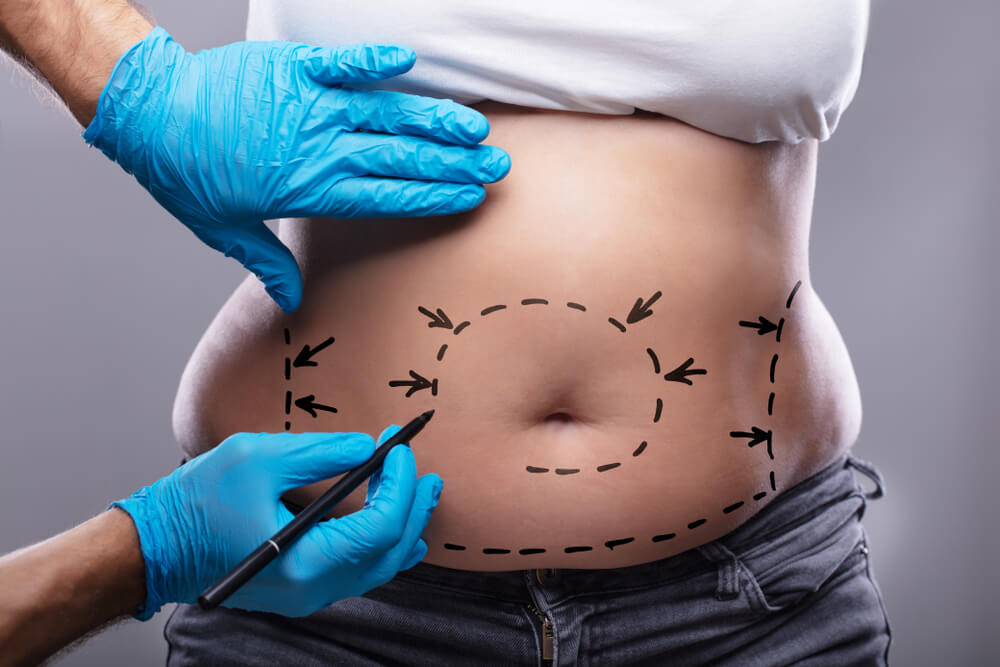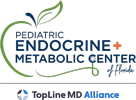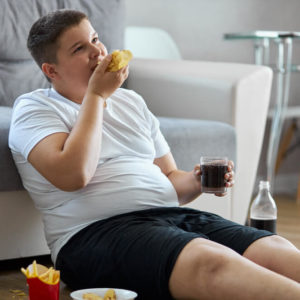Over the last three decades, there has been a 300% increase in the number of overweight kids in the United States. According to recent estimates, around 17% of children in the country are now overweight. Even more disturbing is that obese or overweight preschool kids are 400% more likely than their peers with a normal weight to become obese or overweight when they grow up. Fortunately, with the help of a child obesity specialist, it is possible to avoid or even reverse childhood obesity.
Possible Causes And Risk Factors For Childhood Obesity
The following can either in isolation or in combination with others be risk factors for childhood obesity:
Genetics can play a role in childhood obesity. If a kid’s parents are overweight, they too might be at a higher risk of gaining excess weight. This usually works in combination with other factors such as too little physical activity and eating too high-calorie foods frequently.
Not getting enough exercise. Kids who don’t get enough exercise have a much higher likelihood of gaining weight simply because they burn fewer calories. Spending too much time on stationary activities like playing video games or watching TV can play an important role in this regard. Add to that the role of TV advertisements for unhealthy foods, and you have a ticking time bomb.
Eating a high-calorie diet. Children who regularly eat vending machine snacks, takeouts, or other high-calorie foods are more likely to gain weight. The same can be said about kids who consume desserts, candies, and high-carb drinks on a regular basis.
Psychological issues can play a role in pediatric obesity. A child’s risk of becoming obese can be increased by parental or personal stress. Sometimes kids eat too much simply because they struggle to cope with their emotions or deal with personal or family problems.
Some medications can play a role in childhood obesity. Prescription drugs, for example, have been shown to cause higher risks of developing pediatric obesity. Examples include propranolol (Hemangeol, Inderal), gabapentin (Horizant, Gralise, Neurontin), paroxetine, prednisone, amitriptyline, and lithium.
Socioeconomic issues can become risk factors for childhood obesity. In low-income communities, people might not have easy access to grocery stores, and often they also don’t have refrigerators or freezers. As a result, they might purchase foods that don’t have to be kept cold or frozen, such as cookies and crackers. Add to this a lack of exercise facilities, and you have a disturbing list of possible risk factors for childhood obesity.
Negative Consequences Associated With Childhood Obesity

Apart from gaining too much weight, childhood obesity can have a detrimental impact on a child’s psychological and physical well-being, both over the short and long term.
Emotional and Social Complications
Kids who are obese are often bullied or teased by their peers. This can cause a higher risk of anxiety and depression and a lack of self-esteem that stays with the child into adulthood. This is particularly relevant when we are dealing with obesity in adolescence.
Physical Issues
It is always better to focus on childhood obesity prevention rather than trying to solve the issue afterward. One of the reasons is that obesity in children can often be linked to the following physical complications:
Joint pain and injuries. Those extra pounds place additional stress on the kid’s knees and hips. This, in turn, could increase the risk of back, knee, and hip injuries.
High blood pressure and high cholesterol. Following a high-calorie diet can cause a kid to develop either or both high blood pressure and cholesterol. This can, in turn, increase the risk of plaque buildup in his or her arteries, which often causes these arteries to harden or narrow, which could lead to a higher risk of stroke and/or heart disease somewhere down the line.
Increased risk of diabetes. A sedentary lifestyle and the obesity often associated with it come with a higher risk of type 2 diabetes, a disease that impairs the human body’s ability to respond to or produce insulin. This results in increased glucose levels in the bloodstream and the abnormal metabolization of carbohydrates.
NAFLD (Nonalcoholic Fatty Liver Disease). Although NAFLD typically doesn’t have any symptoms, it causes a buildup of fatty deposits in the child’s liver, which can cause scarring and even liver damage.
Breathing issues. Overweight and obese children are more likely to suffer from asthma. These kids also have a higher likelihood of developing obstructive sleep apnea – a condition where the kid’s breathing is repeatedly disrupted during sleep.
Other physical issues. Childhood obesity and obesity in adolescence are often also linked to orthopedic issues such as slipped capital femoral epiphysis and Blount’s disease, early puberty, and non-alcoholic steatohepatitis (inflammation and fatty infiltration of the child’s liver).
How Is Pediatric Obesity Diagnosed?
When trying to determine whether a child is overweight for their height and age, the doctor will start by calculating the kid’s Body Mass Index (BMI). Next, the child’s percentile will be calculated, i.e., how they compare with other kids of the same age and sex. If your child, for example, is in the 90th percentile, this means that 90% of other kids of the same age and sex have a lower Body Mass Index.
The CDC (Centers for Disease Control and Prevention) has established the following cutoff points to determine how severe a kid’s weight problem is.
If the BMI is:
– At or above the 99th percentile, the child is severely obese
– Between the 95th and 99th percentiles, he or is obese
– Between the 85th and 94th percentiles, the kid is overweight but not yet obese.
Since BMI doesn’t take into account things like having a bigger than average body frame or being muscular, and because there are great variations in growth patterns among kids, the doctor will consider the child’s development and growth as well. As such, the doctor will also evaluate the following:
– Whether your family has a history of weight-related issues and obesity
– The kid’s physical activity levels
– His or her diet
– Whether or not they suffer from other health issues
– Their psychosocial history, e.g., whether he or she ever suffers from sleep disturbances, depression, or sadness.
– Whether or not the kid is being bullied and experiences feelings of isolation
– The doctor might also order one or more blood tests, a blood sugar test, a cholesterol test, and tests for conditions such as hormone imbalances.
Childhood Obesity Prevention And Treatment
Childhood obesity prevention and treatment depends on the kid’s age and health status. It typically includes changes in their physical activity levels and eating habits but could also involve taking certain medications and/or weight-loss surgery.
If your child is older than two and overweight but not obese (see definitions above), the AAP (American Academy of Pediatrics) recommends that he or she is placed on a program to maintain their weight and to prevent further weight gain.
If they are between 6 and 11 and their BMI is at or above the 95th percentile, in other words, they are technically obese, the doctor could encourage a slow weight loss program (around 1 pound per month).
Older kids who suffer from obesity might get a target of losing around 2 pounds a week.
Medications To Treat Pediatric Obesity
Some children might have to take prescription medication as part of their weight loss plan.
Surgery To Treat Obesity in Adolescence

Severe obesity in adolescence is sometimes treated with surgery, particularly if lifestyle changes and weight loss programs fail to work. There are, however, risks involved with this option. A child who is a candidate for weight-loss surgery should always be seen by a team of child obesity specialists, including a dietician, psychologist, and an obesity medication expert. Surgery can also not replace regular physical activity and a healthy diet. We have to say this again: when it comes to childhood obesity, prevention is always better than cure.
Final Thoughts On Pediatric Obesity
We hope we have covered all the important aspects related to the consequences, causes, and treatment of obesity in children. If you think we missed something, or if you have any questions at this stage, please feel free to contact us for more information or to schedule an appointment at our state-of-the-art facilities in Florida.


